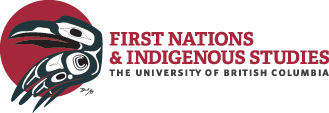What is the International Labour Organization Convention 107 (1957)?
Indigenous and Tribal Populations Convention, 1957 (No. 107) of the International Labour Organization (ILO) is an international instrument adopted to protect Indigenous populations from oppression and discrimination. The convention was drafted in the wake of rising concern about human rights following World War II. It is legally binding in the countries that have ratified it, but has since been amended in many countries by ILO Convention 169.
Since the mid-twentieth century, world leaders have attempted to develop international legislation to protect Aboriginal rights. These instruments have not been without problems and controversies—many experts, for instance, now view the ILO conventions as yet another form of paternalism toward Indigenous peoples. However, these instruments remain important tools for achieving recognition and protection of Aboriginal rights, and paved the way for the adoption, in 2007, of the U.N. Declaration on the Rights of Indigenous Peoples.
Development of ILO Convention 107
Members of the International Labour Organization (ILO), an agency of the League of Nations and later of the United Nations (U.N.), were concerned with raising labour standards around the world after World War II. In 1946, along with other U.N. affiliates and agencies such as the U. N. Educational, Scientific and Cultural Organization (UNESCO), the ILO began the process of writing a convention outlining government obligations to the Indigenous peoples under their jurisdictions. Discussions lasted 11 years, culminating in the convention’s adoption in 1957.
ILO Convention 107 was a pioneering document in that it was the first international instrument to specifically address the human rights of Indigenous peoples. Yet it advocated largely assimilationist goals and was written from a perspective that saw Indigenous cultures as lower on the evolutionary scale than those of European origin. For example, Convention 107 describes Indigenous populations as “at a less advanced stage” than the colonizers and suggests that “the process of losing their tribal characteristics” is inevitable. The convention extended political rights, such as citizenship and the vote in nations where these rights were absent (Aboriginal peoples in Canada did not receive the franchise until 1960). It also recommended vocational training to help Indigenous peoples enter the (settler-based) market economy. Regarding land rights, Article 12.1 of the convention states that Indigenous populations “shall not be removed without their free consent from their habitual territories”—unless the government wants to develop said territory for their own purposes. Critics argue that such clauses enable nation-states to continue their oppression of Indigenous peoples without consequence.
Ultimately, the convention’s authors sought to facilitate integration of Indigenous peoples into the dominant society with minimal conflict. As anthropologist John H. Bodley points out, however, “ironically, undisturbed tribal peoples were doing just fine in all of these areas before outside intrusion. ‘Integration’ created the very conditions of impoverishment that it intended to prevent.”1 Despite its shortcomings, Convention 107 took the first, large steps toward securing equality for Indigenous peoples by discouraging forced assimilation or displacement, acknowledging Indigenous rights to the land, and prioritizing education for Indigneous peoples in their own languages.
As Indigenous groups pushed to have their rights as distinctive and permanent peoples recognized and protected, the ILO re-examined Convention 107, concluding that “the integrationist approach of the Convention was obsolete and that its application was detrimental in the modern world.”2
The convention was therefore revised during 1988 and 1989, and renamed Indigenous and Tribal Peoples Convention, 1989 (No. 169). Convention 107 is no longer open for ratification, but it remains in force in those countries that ratified it but have not ratified Convention 169. These instruments were later reinforced in 2007 by the U.N. Declaration on the Rights of Indigenous Peoples.
A total of 27 nations ratified ILO Convention 107. At present, Convention 107 is still in force in 18 countries.3
By Erin Hanson.
Links & Recommended Resources
International Labour Organization website: www.ilo.org
Convention 107: https://www.ilo.org/dyn/normlex/en/fp=NORMLEXPUB:12100:0::NO::P12100_ILO_CODE:C107
“Indigenous and Tribal Peoples” https://www.ilo.org/global/topics/indigenous-tribal/lang–en/index.htm
Nations that ratified Convention 107: https://www.ilo.org/dyn/normlex/en/f?p=1000:11300:0::NO:11300:P11300_INSTRUMENT_ID:312252
Endnotes
1 John Bodley, Cultural Anthropology: Tribes, States and the Global System, 3rd ed. (Mountain View, CA: Mayfield Publishing, 1999), 415–6.
2 International Labour Organization, “History of ILO’s Work,” Indigenous and Tribal Peoples, About Us, https://www.ilo.org/wcmsp5/groups/public/@ed_norm/@normes/documents/publication/wcms_117356.pdf
3 International Labour Organization, “Convention No. 107, Indigenous and Tribal Peoples.” https://www.ilo.org/dyn/normlex/en/f?p=1000:11300:9699626607629::::P11300_INSTRUMENT_SORT:3

